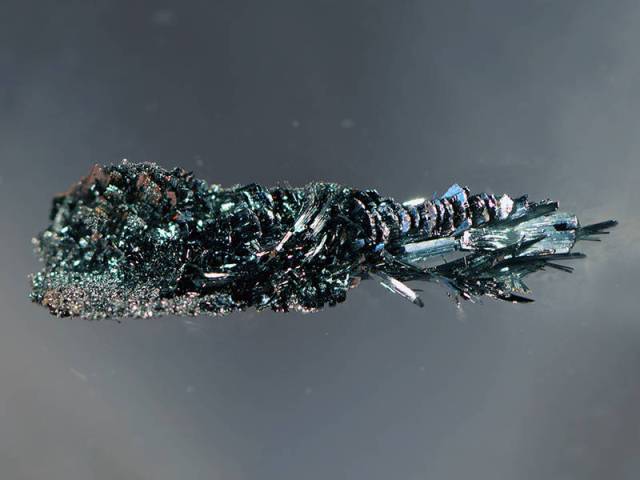A team of international researchers has developed the first field effect transistor made of semiconducting black arsenic phosphorus in which arsenic replaces individual phosphorus atoms. The study was a joint collaboration between the Technische Universität München (TUM), Yale University, the University of Southern California (USC), and the University of Regensburg.
 Crystals of semiconducting black arsenic phosphorus. Photo: Andreas Battenberg / TUM
Crystals of semiconducting black arsenic phosphorus. Photo: Andreas Battenberg / TUM
Wonder material graphene is made up of a single layer of carbon atoms, and gained prominence with the 2010 Nobel Prize. Now, it has been found that black phosphorous can be used to create a similar structure.
Silicon has formed the foundation of contemporary electronics for many years. So far, silicon technology has been used in the development of compact transistors for small instruments. However, we are quickly reaching the smallest size limit for these transistors. Moreover, there is a huge demand for flexible devices, which can be easily integrated into clothing and similar products. However, silicon materials are hard and can break easily. All these factors have led to innumerable studies in the quest for novel materials that could potentially replace silicon in the near future.
One such material could be black arsenic phosphorus. Similar to graphene, black arsenic phosphorus forms very thin layers and could potentially be used in a wide range of applications ranging from sensors and transistors through to mechanically flexible semiconductor systems. This material behaves similarly to a semiconductor, unlike graphene, whose electronic characteristics are similar to metals.
Marianne Koepf at the laboratory of the research group for Synthesis and Characterization of Innovative Materials at the TUM produced the compounds. The research team, led by Dr. Liu and Professor Zhou at the Department of Electrical Engineering at USC, developed and characterized the field effect transistors.
The TUM-developed technology makes it possible to synthesize black arsenic phosphorus without using high pressure. This is not only cost-effective, but also requires less energy. By adjusting the arsenic concentration, the gap between conduction and valence bands can be accurately controlled.
"This allows us to produce materials with previously unattainable electronic and optical properties in an energy window that was hitherto inaccessible," says Professor Tom Nilges, head of the research group for Synthesis and Characterization of Innovative Materials.
The material, with an arsenic concentration of 83%, has a small band gap of just 0.15 eV. This makes it suitable for sensors that are capable of detecting long wavelength infrared radiation. For instance, light detection and ranging (LiDAR) sensors work in this wavelength range. They are utilized as distance sensors in automobiles and in the measurement of trace gases and dust particles in environmental monitoring, amongst other applications.
Another distinct aspect of the novel 2D semiconductor is its optical and anisotropic electronic behavior. The material has a range of properties along the x- and y-axes in the same plane. In order to create films that resemble graphene, the material can be peeled off in very thin layers. So far, the thinnest films produced have a thickness of two atomic layers.
The Air Force Office of Scientific Research (AFOSR), the Office of Naval Research (ONR), the Center of Excellence for Nanotechnologies (CEGN) of King Abdul-Aziz City for Science and Technology (KACST), the TUM Graduate School, and the German Research Council (DFG) supported the study.